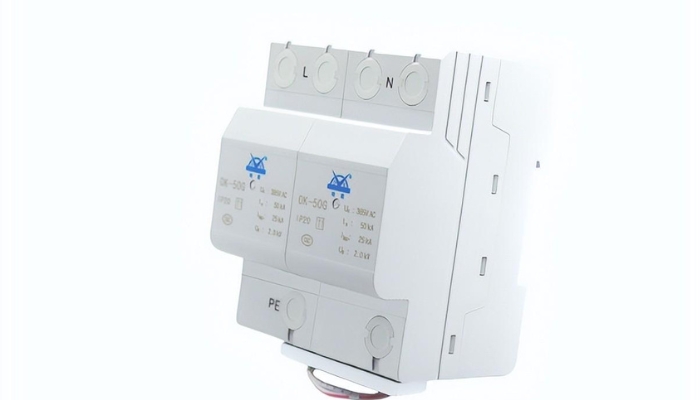A surge protection device, short for SPD, which is a device used to ensure protection against transient surges. It is used to protect homes and commercial applications from voltage transients. It is connected in parallel with the load that must be protected.
What is a transient surge?
Transient surges are sudden increases in power (voltage and current) that last for several microseconds. The surge amplitude is between 1.1 and 12 times the normal system voltage.
What are the causes of transient surges?
Transient surges may be the result of sudden changes in the system or external environment. Internal reasons include load switching and heavy load operation. Sudden changes in load can lead to changes in load current, leading to overvoltage or sometimes voltage surges.
Lightning is the main external cause of transient surges. electrical evices that are directly struck by lightning or indirectly through underground distribution cables will suffer significant damage or at least some interference effects. In addition to lightning switches and sudden load changes in equipment such as transformers and motors, circuit breaker operation may also cause transient surges in the distribution network.
If houses and commercial buildings are not protected, it may lead to the following situations:
Equipment malfunction.
Operation closed.
The communication system is damaged.
In the worst-case scenario, fire and life are at risk.
What is a surge protection device?
Surge protection device is a device used to ensure the prevention of the aforementioned hazards caused by transient surges. They can safely transfer transients to Earth. The surge protector connected in parallel has high impedance. This impedance decreases with the transient voltage present in the system, so that current can be driven to the ground through them. The use of these devices is emphasized in IEC 60364-4-44 and IEC 60364-5-53.
Operating principle of this surge protection device
The principle of surge protection device is very simple. Whenever a transient surge reaches an installed SPD, it will transfer the surge to the ground. This helps to limit the amplitude of surges and minimize damage to electrical devices. Two surge Protected mode: common mode protection and differential mode protection.
Common mode protection:
Prevent transient surge between phase conductor or Ground and neutral and ground (i.e. phase ground or neutral ground). Common mode overvoltage can damage devices connected to the ground. In the event of such overvoltage, the surge protection device directly transmits energy to the ground.
Differential mode protection:
Prevent transient surge between phase and Ground and neutral. This type of overvoltage is more dangerous and may damage all devices connected to the power supply. In the event of such overvoltage, energy can be transferred to the ground or other charged conductors.
Parameter mark of Surge protection device
Nominal system voltage (Uo)
The line to ground voltage of the system designed for operation.
Maximum continuous working voltage (Uc)
The maximum root mean square phase to zero line voltage for device design work.
Rated discharge current
Device safe discharge peak 8/20 μ The current waveform should be at least 19 times. The higher the nominal current, the longer the service life of the device.
Short circuit current rating (SCCR)
The maximum symmetrical fault current that a device can withstand without causing any functional danger is called the short-circuit current rating.
pulse current
The maximum pulse current that the surge protection device can withstand during transient surges. IEC 62305 specifies a maximum rated pulse current of 25kA per pole.
Voltage protection level:
The voltage protection level determines the transient voltage limiting ability of SPD. The lower the voltage protection level, the more effective the device’s response to voltage transients.
Connection of surge protection devices
Usually, SPD is connected before the incomer of the main circuit board. The distance between the equipment and the input circuit breaker shall not exceed 10 meters. If the distribution board has a metal casing, it can be directly grounded to the casing. For non-metallic shells, they must be connected to the auxiliary grounding block. In addition, the installation cable length should not exceed 0.5 meters.
PowerTel & his dedicated engineers are committed to providing a custom protection solution for your power distribution system, including circuit breaker, surge protection device, high quality power cables, cable connector etc.
Please contact us for a custom solution.
